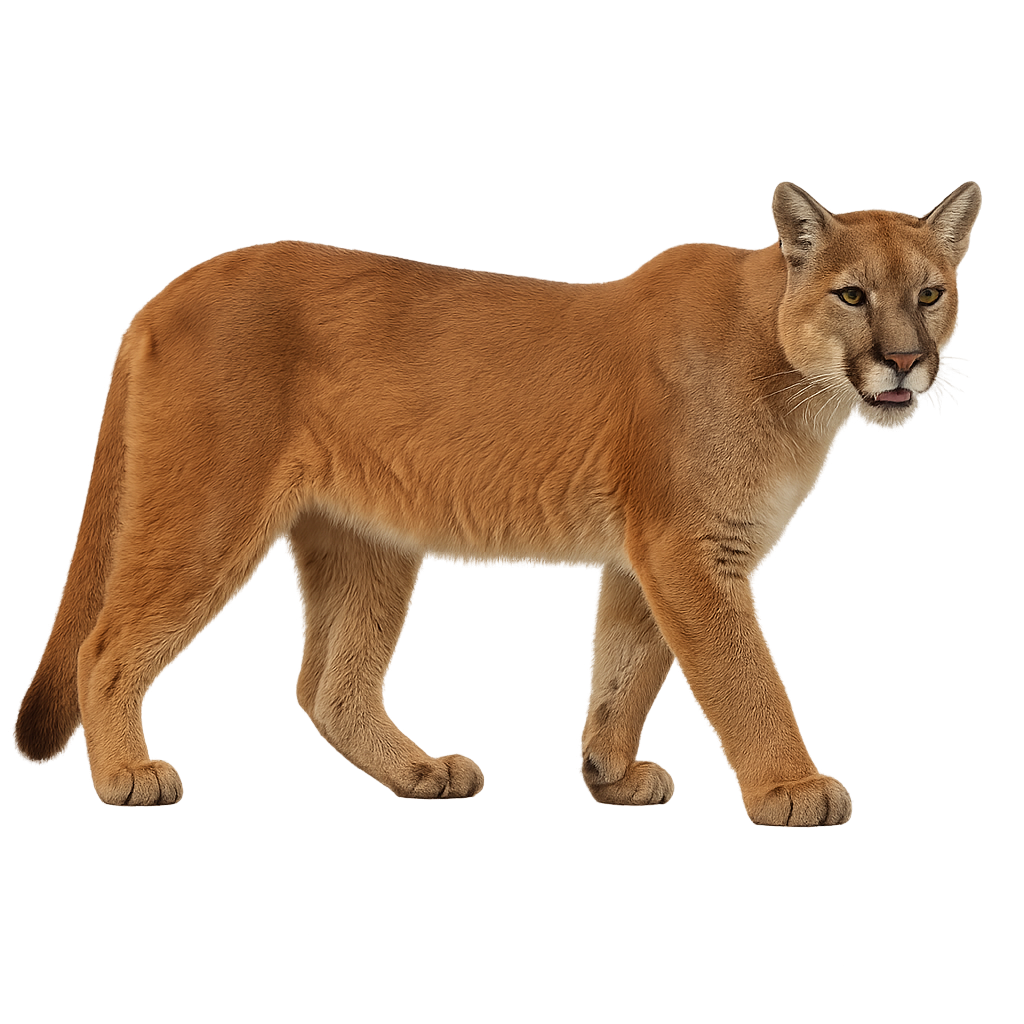Your wildlife photography guide.
Explore the puma in detail, study its behavior, prepare your shots.
Where to observe and photograph the puma in the wild
Learn where and when to spot the puma in the wild, how to identify the species based on distinctive features, and what natural environments it inhabits. The WildlifePhotographer app offers tailored photography tips that reflect the puma’s behavior, helping you capture better wildlife images. Explore the full species profile for key information including description, habitat, active periods, and approach techniques.
Puma
Scientific name: Puma concolor

IUCN Status: Least Concern
Family: FELIDAE
Group: Mammals
Sensitivity to human approach: Suspicious
Minimum approach distance: 50 m
Rut period: January to June
Gestation: 82-96 jours
Births: March to October
Habitat:
Mountains, forests, and semi-desert areas
Activity period :
Active at dawn and dusk, ideal moments for observation.
Identification and description:
The Puma is a large feline found primarily in the Americas, from Canada to the southern tip of South America. It measures between 1.1 and 1.8 meters in length, with a tail measuring 60 to 80 cm, and weighs between 40 and 100 kg, depending on the sex and subspecies. Its coat is typically sandy, gray, or brown, with a lighter underside. The Puma is a solitary predator, primarily hunting deer, small mammals, and birds. It is also capable of traveling great distances and adapting to different types of habitats, ranging from mountainous forests to desert areas. While its population remains relatively stable in certain regions, it can be threatened by habitat loss, fragmentation of its territories, and hunting.
Recommended lens:
300 mm – adjust based on distance, desired framing (portrait or habitat), and approach conditions.
Photography tips:
Approach slowly and discreetly, using a telephoto lens to avoid disturbing the cougar, a discreet and wary predator that can quickly move away if it feels threatened.
Photograph early in the morning or late in the day, when the light is soft and the cougar is more active, often searching for food or patrolling its territory.
Capture moments of natural behavior: The cougar is a solitary hunter and often uses rocky and wooded terrain to track its prey. Wait for moments when it is moving or resting in its natural environment.
Be patient and respectful: The cougar is a discreet animal and can spend a lot of time moving slowly or resting in shaded areas. Wait for it to become more visible without disturbing its natural activity.
The cougar is a species of minor concern, but it is essential to respect its natural environment, especially during hunting or breeding periods. Do not disturb its natural behaviors and follow local conservation rules to preserve this species.
The WildlifePhotographer App is coming soon!
Be the first to explore the best nature spots, track rutting seasons, log your observations, and observe more wildlife.
Already 1 439 wildlife lovers subscribed worldwide

